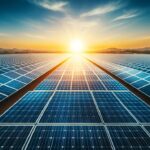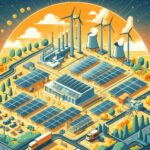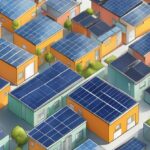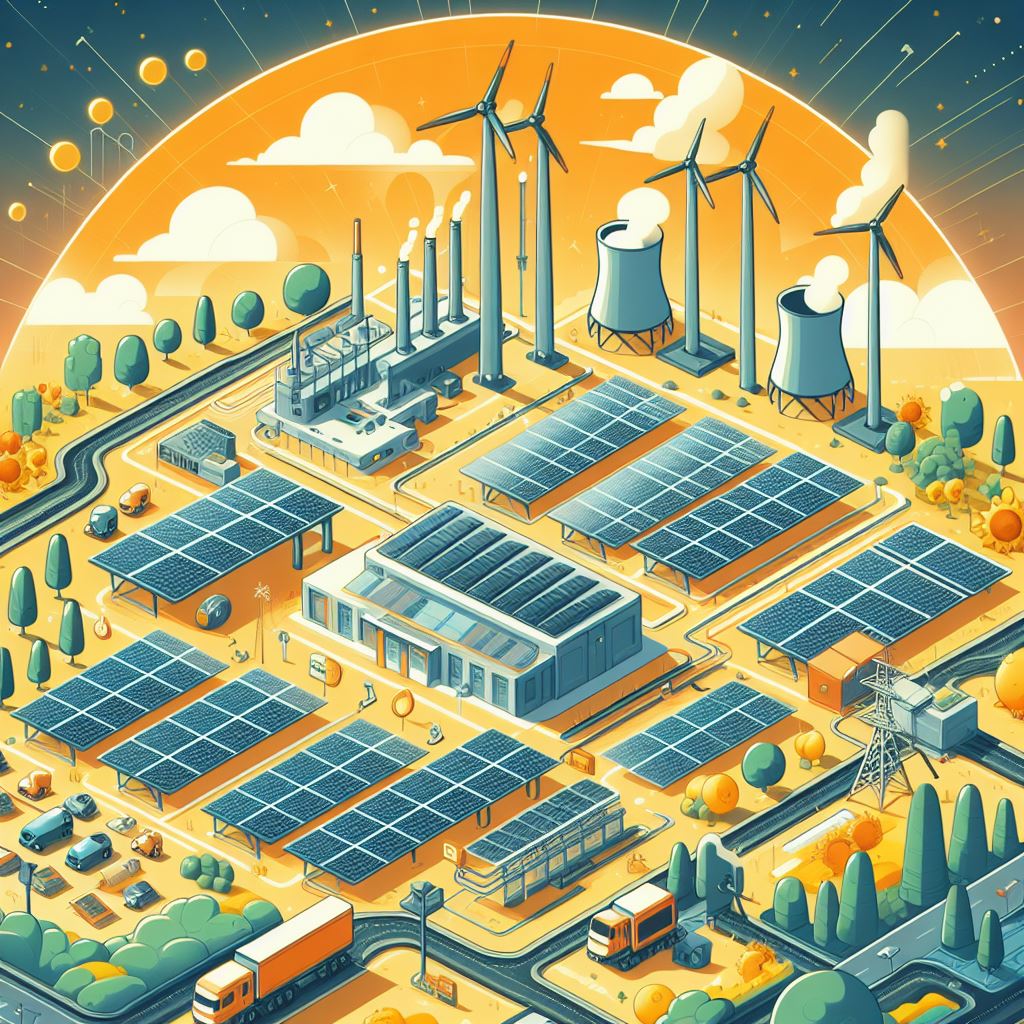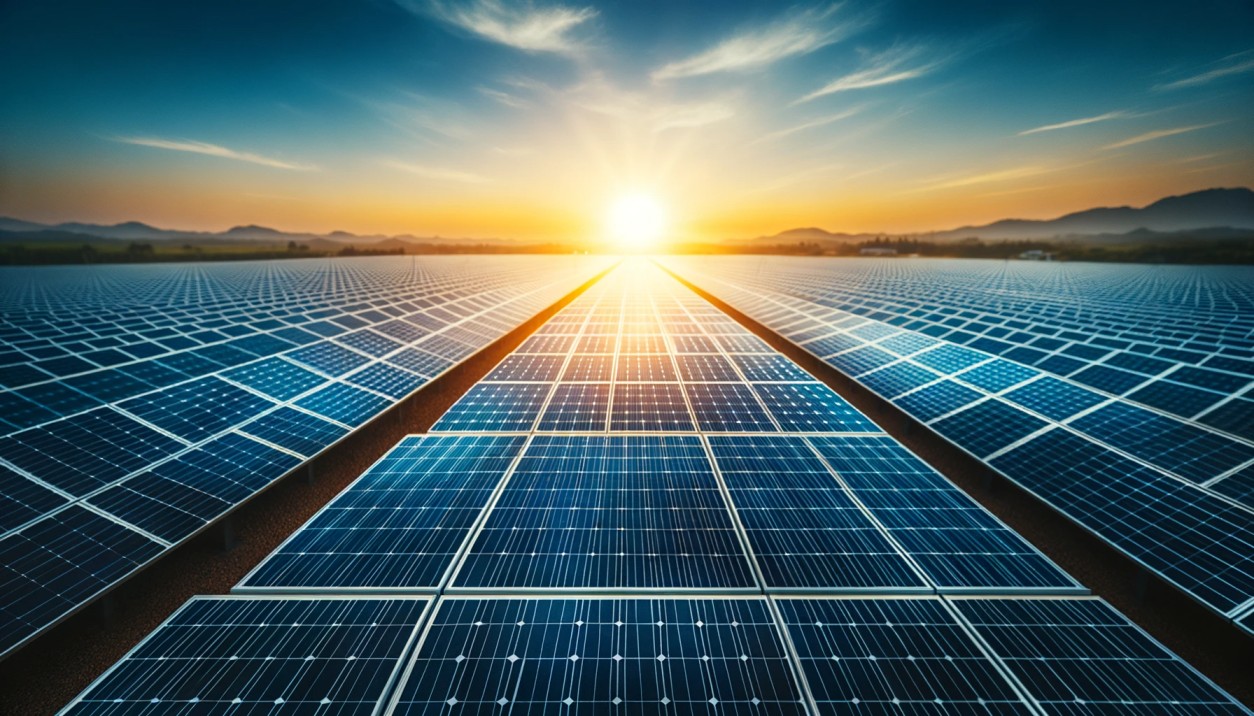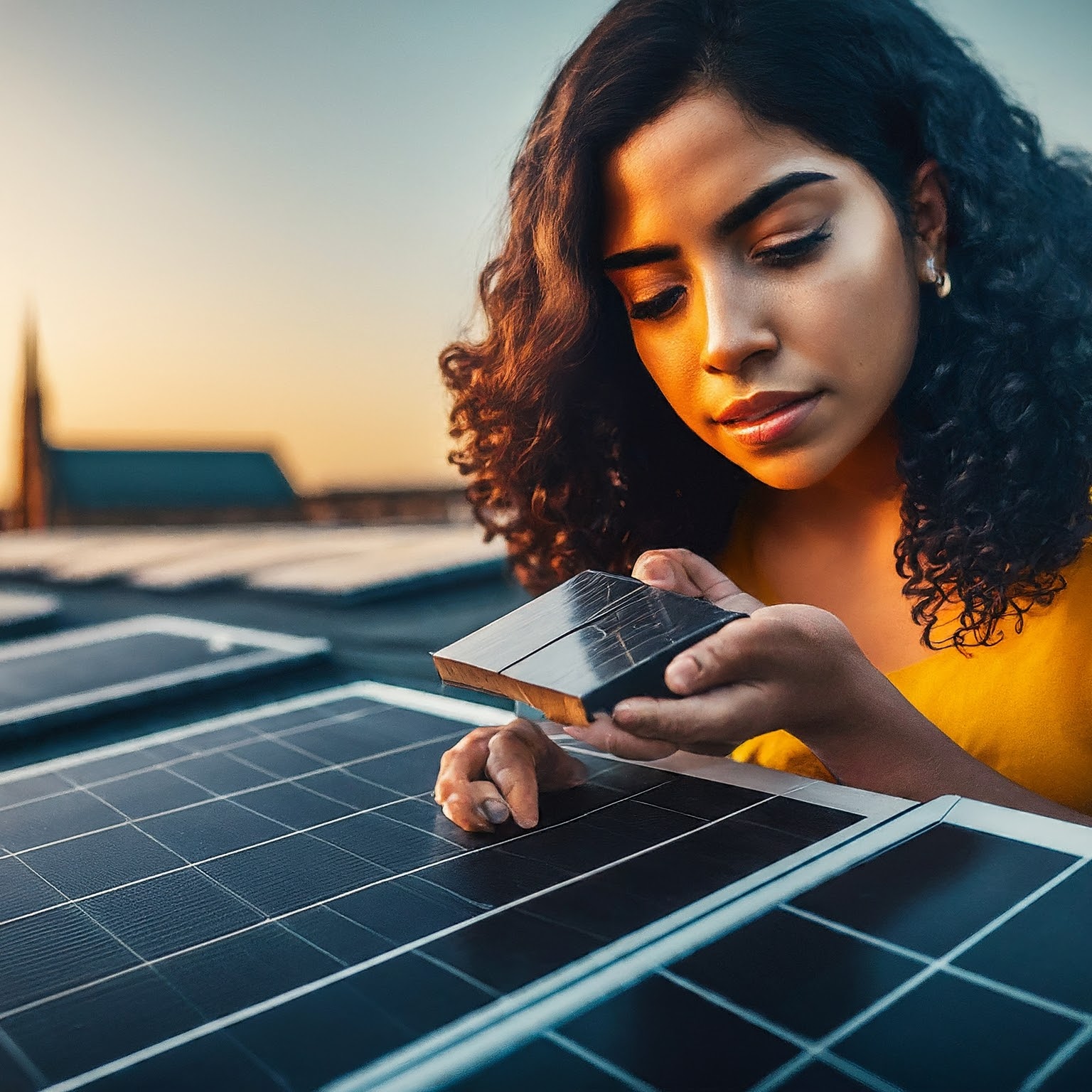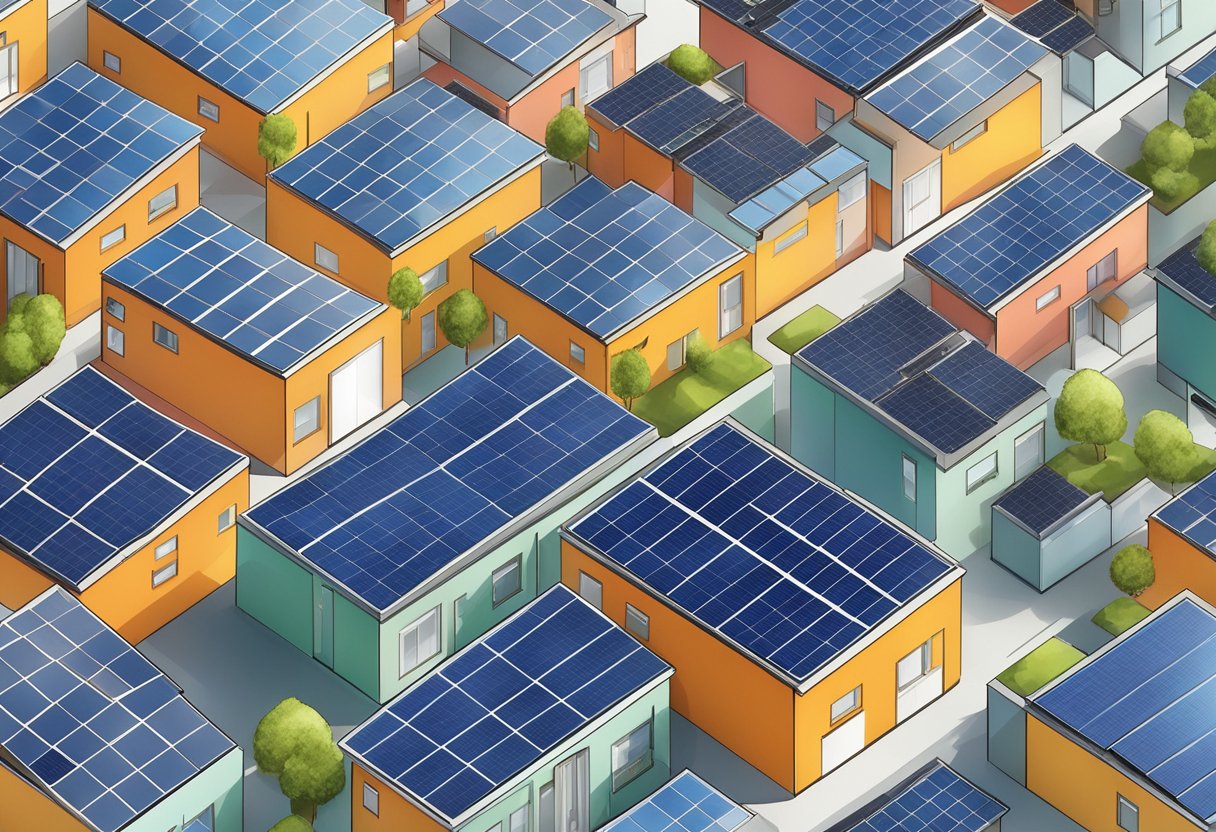Harnessing the Sun’s Power through Solar Farming
How do sprawling fields packed full of thousands of photovoltaic solar panels actually produce clean power, moreover how solar farms work?
These solar energy farms work by efficiently harnessing the incredible natural power from the sun and converting its rays into a renewable source of electricity. These centralised solar power stations are projected to continue major growth, offsetting carbon-intensive generation while diversifying the nation’s electrical infrastructure.
But how exactly do these plants channel the sun’s protons into ready-for-grid alternating current that is transported miles away?
This comprehensive guide will explore solar farm components from panels to inverters, the conversion processes taking place, connections into transmission systems, advantages over distributed PVs, and the overall role photovoltaic plants play as part of the renewable energy economic boom.
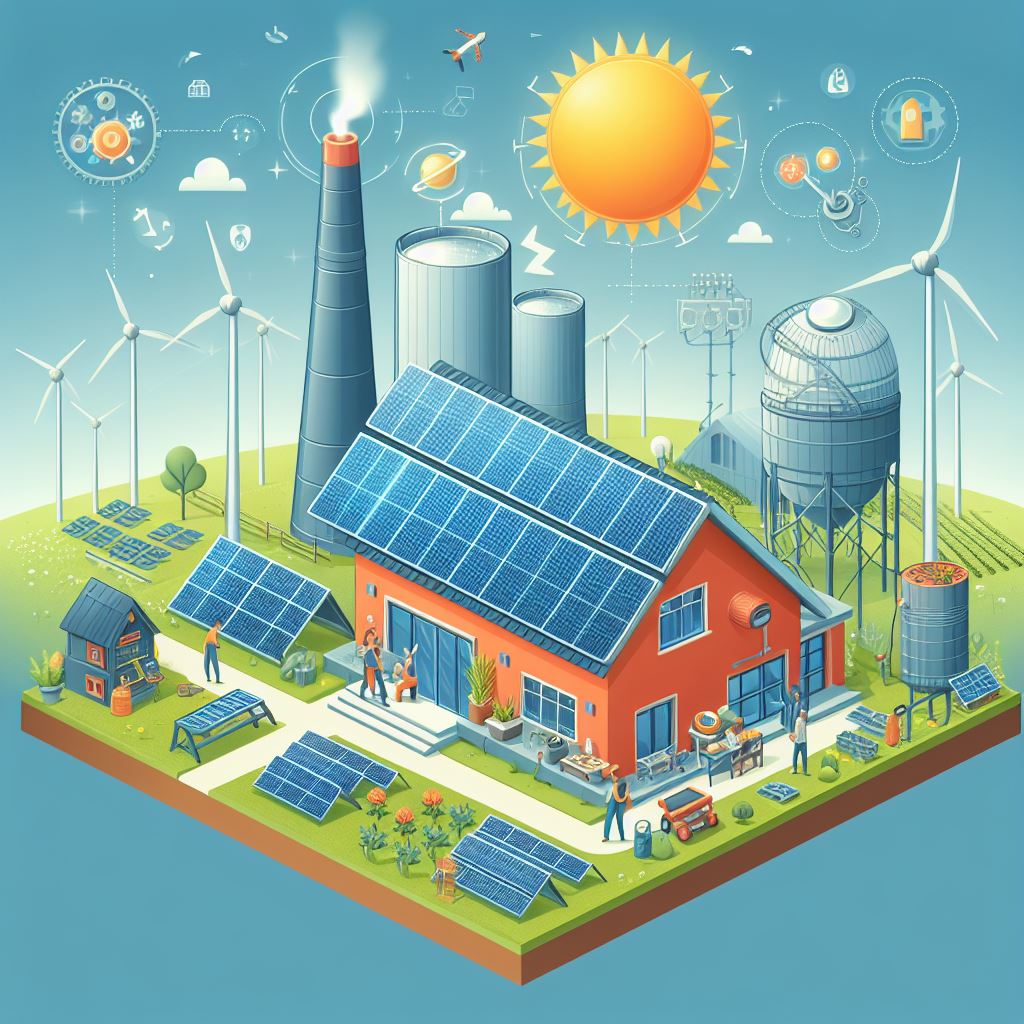
What is a Solar Farm/Power Plant?
A solar farm, also referred to as a photovoltaic (PV) power station, solar power plant or solar park, is essentially a large-scale solar energy generation system designed to supply renewable electricity to the power grid.
Spanning vast acres of land, these centralized solar farms soak up the abundant rays shining down in key solar belt regions. The solar arrays tracking the sun convert photons to direct current, then inverted for integration into the transmission system infrastructure to become usable alternating current electricity.
Solar farms function as renewable power plants, just fueled by the sun rather than finite resources. Also called solar photovoltaic plants, they operate on the same principles as smaller-scale rooftop PV panels, just exponentially sized up in generation capacity potential.
Where a residential system may be 5-10 kilowatts, a commercial solar farm can reach capacities of 100+ megawatts – rivaling traditional coal, gas and nuclear plant output levels. The modular nature also enables starting small then scaling over time as demand increases and financing allows.
With plenty of open terrain allowing massive setup potential combined with perpetually free sunshine fuel available in key states, centralized ground-mounted solar farms will continue exponential expansion as part of renewable electricity’s takeover of generation market share. intelligently aligning high insolation together with growing grid capacities enables utility-scale solar farms to shine…both today and even brighter in the forecast.
How Do Solar Farms and Power Plants Work?
The key components inside solar farms enabling renewable sunlight conversion include acres of photovoltaic solar panels, intelligent solar tracking mounts, industrial-grade inverters and transformers, as well as interconnection hardware for injection into electrical grid transmission systems.
The modular nature also enables incremental expansion over time – starting at say 25 megawatts then adding additional capacity over months or years to grow toward the 100-200+ MW centralized plant scale match traditional generation.
This flexibility mixed with extreme space efficiency vs less concentrated residential rooftop distributed setups allows maximizing economies of scale. So how do all these elements come together to actually transform photons from the sun into usable electricity?
First, the solar panels are arranged together in long rows that form arrays throughout huge swaths of flat land or elevated structures. This vastly multiplied surface area transforms a massive amount of solar irradiation into direct current over the system’s 25+ year lifespan.
The panels sit upon single-axis tracking mounts programmed to incrementally move their angle to follow the sun’s changing position throughout the day which increases energy yield 20-25% over fixed angle alternatives.
This generated DC electricity from the collective solar cells gets aggregated and runs through special grid-tie inverters which convert it into high-voltage alternating current that is quality regulated to meet utility standards.
Integrated transformers then step up the voltage even further (typically 34.5kV) in order to send the solar-sourced power miles away through transmission lines with minimized losses enroute to connecting into a substation and feeding the regional electrical grid.
Monitoring systems give plant operators maximized oversight into every aspect of the sprawling solar generation ecosystem.
Solar Farm/Plant Components
When you zoom into the anatomy of a utility-scale solar generation plant, there are a range of technical components that each play a role in the electricity production process flow.
Here are some of the key pieces of equipment that enable the renewable solar energy conversion chain inside one of these large-scale PV power stations:
Photovoltaic Panels: Comprised of solar cells made from mono/polycrystalline silicon semiconductors encased by glass, aluminum framing and weatherproof backing. Rack mounted in long rows on tracking arrays. Electrical connections/cabling aggregate DC current.
Inverters: Industrial grade grid-tie string inverters convert collected DC from panels into usable AC electricity by pulsating voltage positive and negative. Quality regulations are met to match utility standards.
Transformers: Once converted to AC, transformers included in electrical skids further step up solar voltage from say 480V to 34.5kV for injecting into transmission lines with minimized losses for distances.
Trackers: Single or dual-axis tracking tables the PV panel racks sit upon slowly rotate back and forth to continually realign perpendicular angles with the sun’s position from sunrise to sunset. Maximizes yield over fixed mounts by 20-25+ percent through increased sunlight absorption.
Monitoring: Granular oversight into plant generation performance, operational health metrics, flagging anomalies etc. is enabled by sensors throughout arrays tied to advanced monitoring software and controls. Both on-premise and remote visibility.
In addition to this equipment directly enabling electricity generation, solar farms contain transmission infrastructure, civil works such as roads and fencing, operations/maintenance buildings and more.
The grid interconnection hardware enabling transmission lines to channel the solar-generated alternating current out to distribution substations also plays a key role.
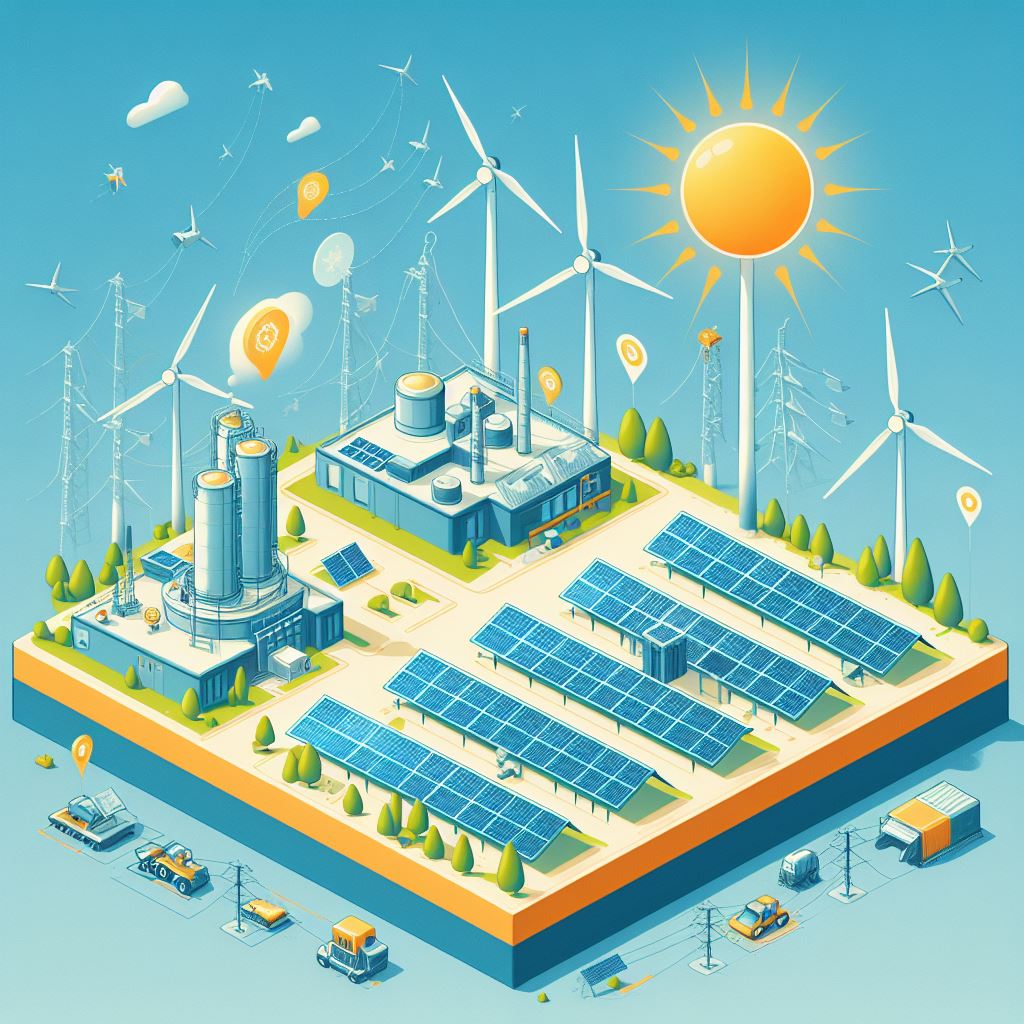
Gathering and Converting The Sun’s Energy
The electricity generation process begins with solar farms spreading out immense surface area coverage through arrays of photovoltaic panels mounted upon trackers spanning acres of land. This allows capturing a maximum level of irradiation from the sun’s photons during peak daylight hours.
The conversion cycle starts when the valence electrons get excited by solar energy which initiates a flow of DC current and voltage.
As sunlight photons get absorbed into the solar cells constructed onto the PV panels, this stimulates electrons to release and start moving freely.
The panels’ embedded electric fields provide pathway directionality ultimately aggregating together all the solar-excited electrons into usable electric output. DC cables interlink arrays which all flows into conversion stations.
Specially designed inverters transform the solar fueled direct current by inverting it into alternating current that matches specifications and quality standards for integration into electrical grid infrastructure.
This includes regulating voltage, frequency, harmonics, etc. Transformers subsequently bump incoming AC voltage up even higher in preparation for minimizing line losses when transmitted over long distances to the interconnection point.
This maximum energy yield harvesting combined with efficient conversion technology is how solar farms effectively transform the sun’s abundant irradiation into a supply of renewable alternating current capable of reliable backfeeding regional electrical grids across the country.
Tracking-enhanced high efficiency panels amplify production while conversion systems regulate and tune the solar juice for stable clean power.
Connecting to the Grid
Once the solar energy gets converted into usable alternating current electricity meeting interconnection standards, the next crucial stage is transmission and distribution to connect with the grid.
While small scale residential PV can feed into neighborhood transformer lines, solar farms link directly into utility provider transmission infrastructure to be able to deliver higher capacity.
On the transmission side, medium voltage collection systems aggregate multiple array outputs together which all feeds into a centralized utility-scale substation.
This includes equipment like switchgear, protective relaying, disconnect switches, bus structures and more for safe reliable aggregation before scaling up to even higher voltages.
Transformers play an integral role in stepping up collection voltages further through transformer banks in order to minimize resistive line losses when transporting the solar electricity long distances to interconnection points.
This transformed output (typically 34.5kV+ alternating current) links into specialized HV lines purpose built for efficiently carrying high megawatt volumes way beyond what distribution level infrastructure can handle.
These transmission lines containing the flowing solar electricity will span miles directly into the provider’s grid interconnection substation where protection systems seamlessly transition injection blending together the carbon free renewable generation into the regional grid supply.
Careful grid planning ensures capacity for intake along with stabilized incorporation into the overall demand. This is how efficiently harvested solar energy travels from the centralized plants out to homes and businesses needing clean renewable power.
Benefits of Solar Farms
Beyond functioning as immense emissions-free electricity generation stations, solar farms unlock a multitude of advantages both inherent within their operation and also from positive impacts applied more broadly. Here are some of the top level benefits provided by utility-scale solar plants:
Clean Renewable Energy: Solar farms generate hundreds of megawatt hours of 100% renewable solar energy, avoiding over a million metric tons of CO2 emissions annually per large scale plant. This contributes enormously to environmental sustainability.
Cost Effectiveness: The economies of scale achieved through racking sprawling acres of land with PV panels drives down the levelized cost dramatically versus small scale residential/commercial installs. Passing savings to ratepayers.
Reliability: Solar farms integrate sophisticated monitoring and controls with analytics dashboards. Combined with minimal moving parts, centralized O&M programs enable extreme energy delivery reliability.
Grid Diversification: Solar electricity generation blended into the grid mix diversifies supply, reduces demand strain on the infrastructure and provides a balanced portfolio of generation sources.
Jobs & Revenue: Large solar farms infuse investments into rural communities via land leases, tax revenues, grid enhancement projects and long term skilled labor opportunities in construction/operation/maintenance.
Land Use Benefits: Co-locating certain agricultural uses like sheep grazing, pollinator habitats and crop farming around solar arrays can simultaneously maximize land utility.
Solar-centric locations stand to economically thrive thanks to the job creation coupled with environmental gains when embracing properly sited large scale PV plants as part of their state’s renewable transition. The advantages stack up quickly for solar farms delivering bountiful clean energy.
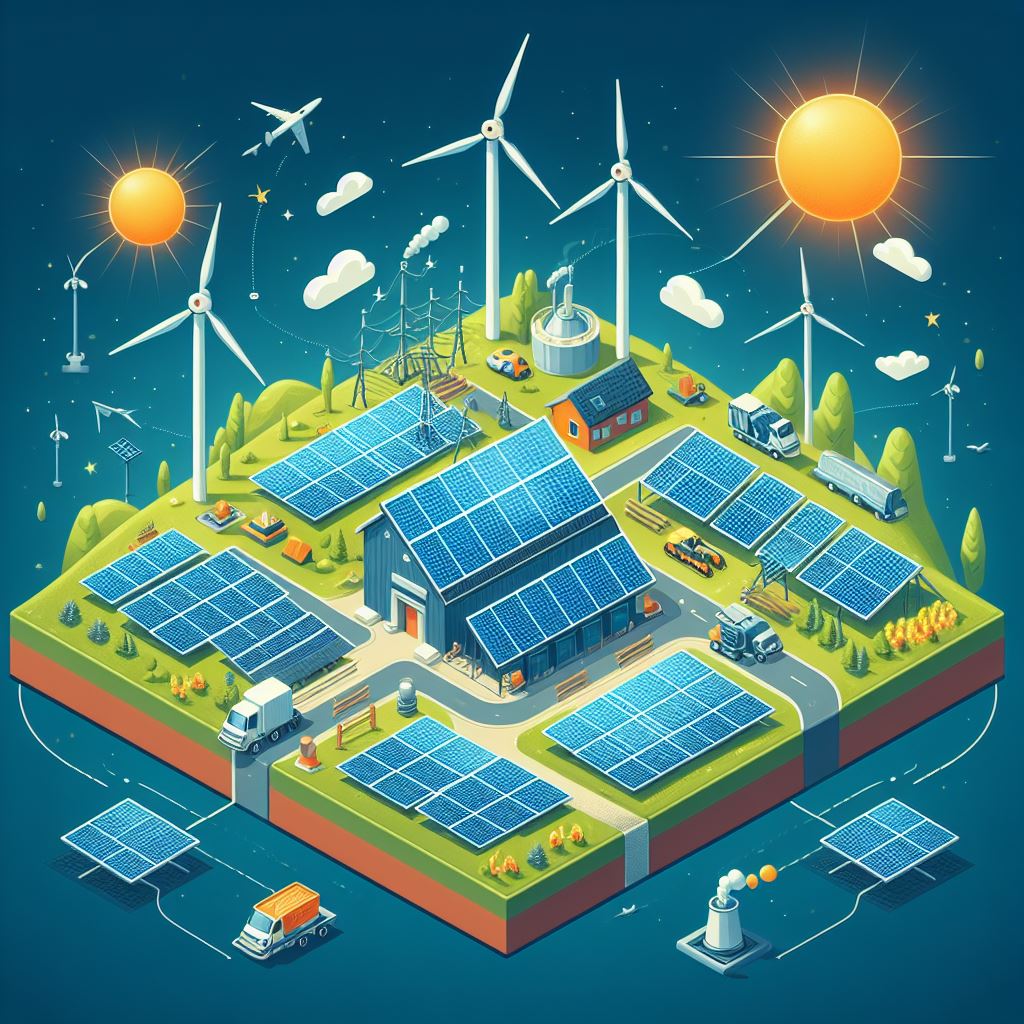
Comparing Solar Farms vs Rooftops
While solar farms and rooftop PV systems share the same foundational photovoltaic technology, the divergence in application scales leads to debates around contrasts in positives and negatives. Here’s an overview of the key differences between utility-scale centralized solar plants versus small scale distributed residential/commercial installs:
Size & Land Needs: Solar farms can cover 500+ acres and generate 100+ MW. Rooftop is measured in kW per suburban home with only partial offset.
Location Flexibility: Farms need large continuous open unused terrain with high sun exposure. Rooftop goes wherever structures exist – limited potential sites.
Upfront Costs: $1+ million per MW capex for ground mount utility construction represents high barriers. But rooftops cost 2-3x more per watt.
Grid Interactions: Farms tap directly into high voltage transmission. Rooftops leverage low voltage distribution – upgrades often needed for dissemination.
Ownership Models: Solar plants use third party financing like PPAs. Homeowner owned rooftop uses leases, loans and direct ownership.
While differences clearly exist between the two solar application types, they possess an incredible symbiotic relationship rather than competition. Solar farms enable clean energy accessibility to the 75% in urban regions lacking rooftop suitability.
Meanwhile distributed PVs equally carry an important role offering self-consumption combined with grid assistance. The pairing perfectly complements each other!
Conclusion
Solar farms function as impressively scalable centralized powerhouses converting sunlight into clean renewable electricity that feeds regional transmission grids.
The vast dimensions allow for hundreds of thousands of photovoltaic panels orchestrated using trackers, inverters, transformers and monitoring controls to maximize solar absorption and modulate the energy into grid-compatible alternating current.
Intricate planning goes into these sprawling “solar plants” to identify optimal terrain and infrastructure connectivity for sustaining high yield collection converted for efficient long-distance transmission.
Detailed project management coordinates civil work, equipment logistics, specialist subcontractors and teams of experts across solar farm construction.
The meticulous development pays dividends for decades via low-cost pollution-free electricity generation bolstering grid reliability through a balanced and diversified supply mix.
Solar farms dotted across sun-rich geographies herald a vibrant future where scalable renewable energy achieves dominance over fossil fuels. Their modular expandability means the potential remains boundless vs land constraints holding back the distributed solar segment.
Rapid ongoing cost declines will only accelerate further deployment of massive photovoltaic power stations thanks to enhanced panel performance, manufacturing improvements and rising cumulative global experience.
These factors position solar farms as an indispensable arrow for renewable energy targets aiming to curb the most dangerous climate change scenarios.


